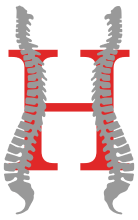In a lumbar fusion procedure, transplanted bone grows together with existing bone in the lumbar (lower back) region of the spinal column. It forms one solid bone to stabilize and restore strength to that section of the spine.
When Is Lumbar Fusion Needed?
Lumbar fusion may be appropriate when the lumbar region of the spine has become unstable. This can occur as the result of deformity, a tumor, trauma, or degeneration. It can also occur as a side effect of medical intervention to treat a tumor, a deformity, or a degenerated disc.
When the spine has become unstable because of medical treatment, this is known as iatrogenic instability. It may be necessary to surgically remove sections of the disc or bone in the lower back to reduce the pain and symptoms associated with a degenerated disc, a tumor, or a spinal deformity. As this can leave the spine structure less stable, lumbar fusion may be performed to restore strength and prevent or correct iatrogenic instability.






